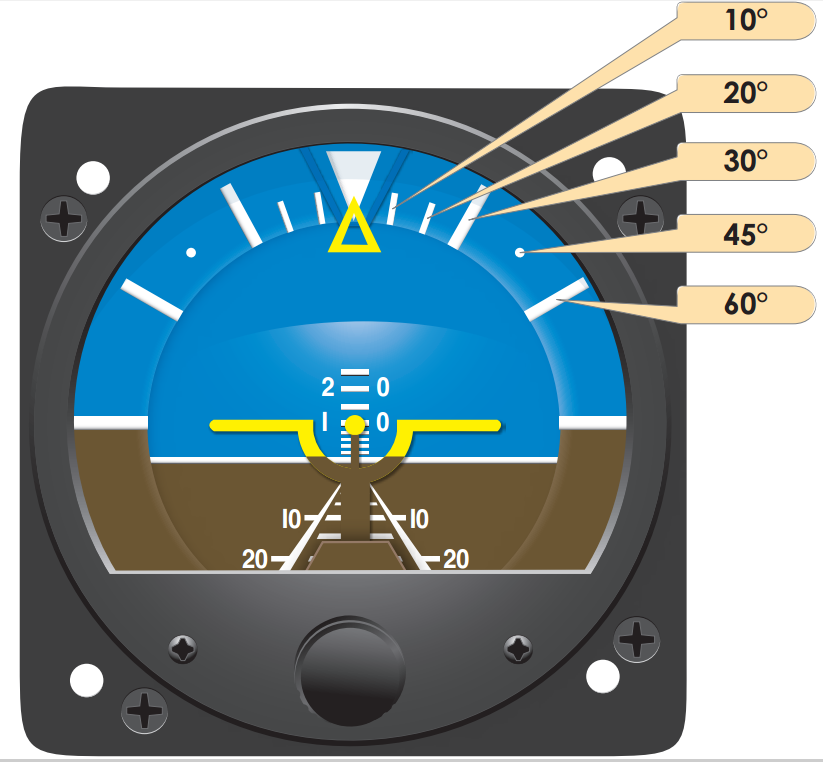Understanding the Difference: HSI vs Heading Indicator
Oct 04, 2024
What is a Horizontal Situation Indicator (HSI)?
A Horizontal Situation Indicator (HSI) is a more advanced navigation instrument that combines a heading indicator with a course deviation indicator (CDI) to give you a complete picture of the aircraft's position relative to a selected navigation course.
The HSI takes in several navigation inputs and combines heading with course guidance. The course deviation bar provides pilots with a visual indication of their position relative to the selected course, helping them identify left or right deviations.
The course select knob allows pilots to select the desired course by rotating the knob, which adjusts the course-indicating arrow in relation to the compass card on the instrument.
It reduces your workload by putting all the important info in one place so you can navigate more easily during instrument approaches and enroute.
It’s connected to VOR, ILS and GPS so you can navigate with different types of signals. The fixed aircraft symbol represents the aircraft’s position in relation to the selected course, enhancing situational awareness and navigational accuracy.
Differences between the Horizontal Situation Indicator (HSI) and the Course Deviation Indicator
Definitions and Functions
Horizontal Situation Indicator (HSI)
The Horizontal Situation Indicator (HSI) is an advanced navigation tool that combines a heading indicator with a course deviation indicator (CDI).
Indicator points display various parameters such as headings, course deviations, and glideslope information, aiding in pilot situational awareness by helping them understand the aircraft's position relative to the desired flight course.
It gives you a big picture of where the aircraft is in relation to the navigation course. The HSI shows the aircraft's position relative to the selected course, which is crucial for pilots when interpreting instrument readings and adjusting their flight paths effectively.
By combining multiple navigation sources, the HSI gives you more situational awareness and heading data with course guidance.
This reduces pilot workload, especially during instrument approaches and enroute navigation and is used with multiple navigation systems like VOR, ILS and GPS.
Heading Indicator
The Heading Indicator, also known as a directional gyro (DG), is a simpler mechanical device that shows the aircraft’s heading relative to magnetic north.
It does this with a gyroscope that stabilizes itself against the horizon, so you get a reliable heading indication even during aircraft maneuvers.
It’s a simple device, standalone and not very connected to other navigation systems.

Importance and Usage in Aviation for Situational Awareness
The HSI’s main advantage is it combines all the important navigation information in one display and gives the pilot quick situational awareness and reduces cognitive load.
It’s essential in complex navigation scenarios, makes for smoother instrument flying and safer.
Meanwhile the older Heading Indicator is part of basic flight instruments.
It’s reliable and simple to use so it’s important for maintaining directional orientation when GPS or advanced avionics is not available or compromised.

Advantages and Disadvantages
HSI Advantages:
-
Combines multiple information streams into a unified interface.
-
Enhances situational awareness and reduces pilot workload.
-
Adaptable with various navigation systems, offering versatile utility.
HSI Disadvantages:
-
Complexity can be daunting for novices.
-
Higher cost and maintenance requirements.
Heading Indicator Advantages:
-
Simple, reliable, and intuitive operation.
-
Minimal maintenance with robust construction.
Heading Indicator Disadvantages:
-
Lack of integration with other navigational systems.
-
Requires frequent adjustments due to mechanical drift.
In summary, both have their own strengths, but together in the cockpit you can navigate any aviation environment with confidence and accuracy.

How the HSI Transforms Navigation and Situational Awareness for Pilots
Fly with confidence, through clouds and clear skies. The Horizontal Situation Indicator (HSI) makes this a reality by changing how you interact with flight data.
Here’s how the HSI makes flying better:
-
Situational Awareness: Imagine the HSI as a high-tech map with real-time updates. By combining the magnetic compass and navigation systems like VOR, ILS or GNSS the HSI paints a picture of your aircraft’s position relative to the course line.
It’s like having a co-pilot that keeps you on track even in tough conditions.
-
Navigation: Goodbye reverse sensing. The HSI gives you precise navigation cues, so your flight path is aligned and helps you avoid costly or dangerous mistakes.
It’s like having a guide that always keeps you headed in the right direction.
-
Versatility: With the ability to show localizer and glideslope deviations at the same time the HSI gives you a complete view of your flight path.
Whether flying in a busy airport or a quiet cross country the HSI’s display keeps the important information in front of you and makes complex data easy to read.
Imagine an artist blending colors on a canvas. The HSI does the same with data. It takes all the disparate information and puts it into one easy to read display so pilots can focus on what they do best – flying with precision and confidence.
With an HSI, pilots have a powerful tool to increase safety, efficiency, and fun; every flight is smooth and inspiring. In fact, most modern HSI displays integrate advanced technology to enhance functionality further.

Practical Applications of an HSI
The HSI (Horizontal Situation Indicator) is often linked with an autopilot system that seamlessly follows the heading select bug.
This integration ensures that the aircraft maintains a precise course, taking much of the stress out of navigation and allowing pilots to focus on other critical aspects of flight.
One of the HSI's standout features is its ability to calculate the shortest path to join a radial.
This ensures a more efficient flight route, saving time and fuel and providing a smoother experience for both the flight crew and passengers.
Weather data is crucial during flight, and the HSI is equipped to display vital weather information right on its interface.
Pilots can easily monitor precipitation, storm cells, and turbulence, making it simpler to make informed decisions and increase flight safety.
Beyond merely showing the way, the HSI integrates terrain and traffic awareness into its display.
This gives pilots a real-time view of potential obstacles and traffic around them, enhancing situational awareness and reducing the risk of in-air incidents.
Finally, the HSI provides heading and course information in a clear numerical format alongside the graphic display.
This feature delivers crucial data at a glance, making navigation straightforward and enhancing the overall flying experience.

Conclusion: Why the HSI is Indispensable for Pilots in Navigating Today’s Skies
The Horizontal Situation Indicator (HSI) is a crucial instrument for effective navigation, providing pilots with a comprehensive view of their surroundings.
By combining the functions of a heading indicator and a course deviation indicator, the HSI offers enhanced situational awareness, reduced workload, and improved navigation.
Its ability to display information in various ways has evolved, making it an essential tool for pilots. The integration of the HSI with modern glass cockpit avionics has further enhanced its capabilities, ensuring that pilots have all the necessary data at their fingertips.
Whether used as a standalone instrument or as part of a larger navigation system, the HSI remains an indispensable aid for pilots seeking to navigate safely and efficiently.
Its blend of tradition and innovation ensures that pilots can maintain a clear view of their surroundings throughout their journey, making every flight smoother and more inspiring.

